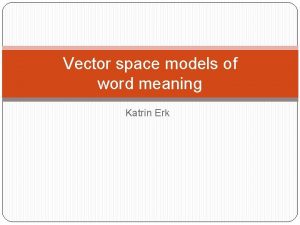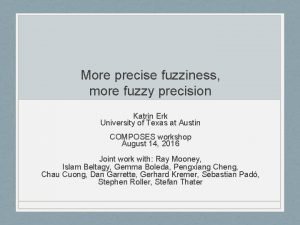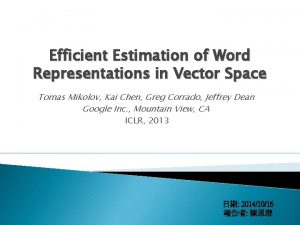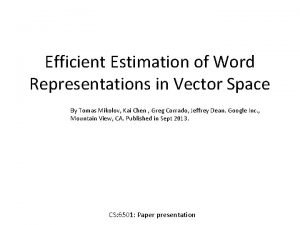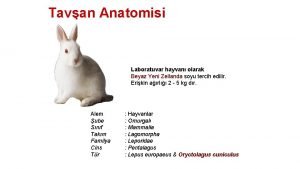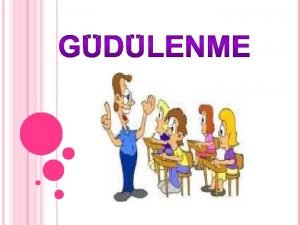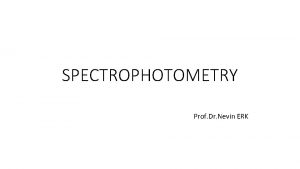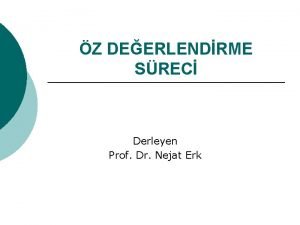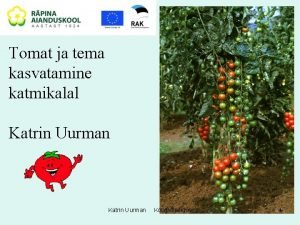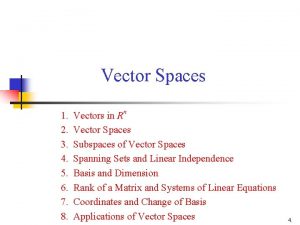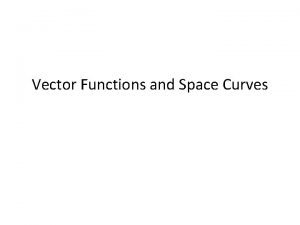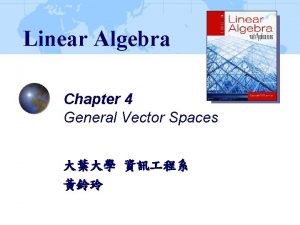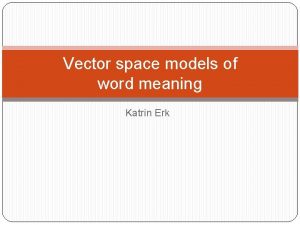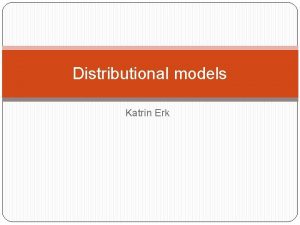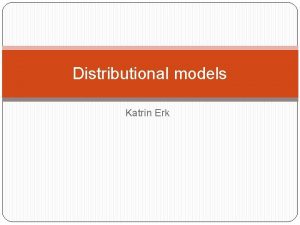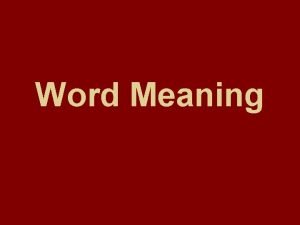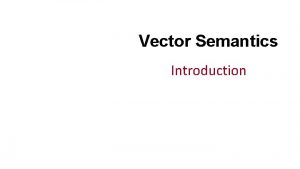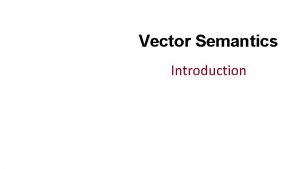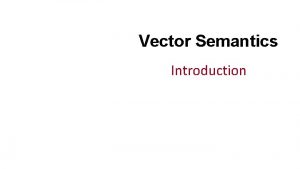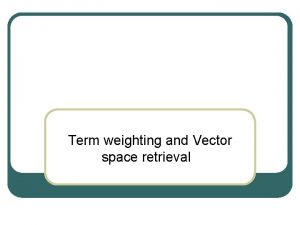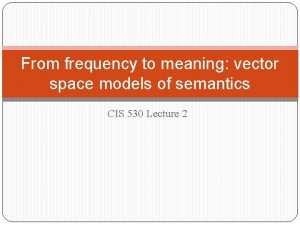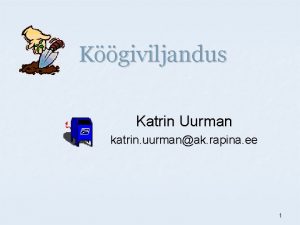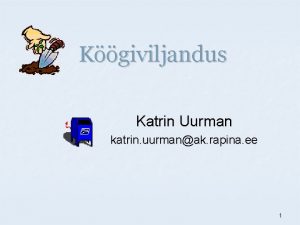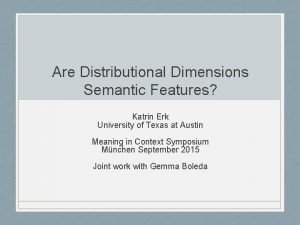Vector space models of word meaning Katrin Erk





















- Slides: 21

Vector space models of word meaning Katrin Erk

Geometric interpretation of lists of feature/value pairs In cognitive science: representation of a concept through a list of feature/value pairs Geometric interpretation: Consider each feature as a dimension Consider each value as the coordinate on that dimension Then a list of feature-value pairs can be viewed as a point in “space” Example (Gardenfors): color represented through dimensions (1) brightness, (2) hue, (3) saturation

Where do the features come from? How to construct geometric meaning representations for a large amount of words? Have a lexicographer come up with features (a lot of work) Do an experiment and have subjects list features (a lot of work) Is there any way of coming up with features, and feature values, automatically?

Vector spaces: Representing word meaning without a lexicon Context words are a good indicator of a word’s meaning Take a corpus, for example Austen’s “Pride and Prejudice” Take a word, for example “letter” Count how often each other word co-occurs with “letter” in a context window of 10 words on either side

Some co-occurrences: “letter” in “Pride and Prejudice” jane : 12 • when : 14 • by : 15 • which : 16 • him : 16 • with : 16 • elizabeth : 17 • but : 17 • he : 17 • be : 18 • s : 20 • on : 20 not : 21 for : 21 mr : 22 this : 23 as : 23 you : 25 from : 28 i : 28 had : 32 that : 33 in : 34 was : 34 it : 35 his : 36 she : 41 her : 50 a : 52 and : 56 of : 72 to : 75 the : 102

Using context words as features, co-occurrence counts as values Count occurrences for multiple words, t a r g e t arrange in a table context words For each target word: vector of counts w Use context words as dimensions o Use co-occurrence counts as co-ordinates r d For each target word, co-occurrence counts define s point in vector space

Vector space representations Viewing “letter” and “surprise” as vectors/points in vector space: Similarity between them as distance in space letter surprise

What have we gained? Representation of a target word in context space can be computed completely automatically from a large amount of text As it turns out, similarity of vectors in context space is a good predictor for semantic similarity Words that occur in similar contexts tend to be similar in meaning The dimensions are not meaningful by themselves, in contrast to dimensions like “hue”, “brightness”, “saturation” for color Cognitive plausibility of such a representation?

What do we mean by “similarity” of vectors? Euclidean distance: letter surprise

What do we mean by “similarity” of vectors? Cosine similarity: letter surprise

Parameters of vector space models W. Lowe (2001): “Towards a theory of semantic space” A semantic space defined as a tuple (A, B, S, M) B: base elements. We have seen: context words A: mapping from raw co-occurrence counts to something else, for example to correct for frequency effects (We shouldn’t base all our similarity judgments on the fact that every word co-occurs frequently with ‘the’) S: similarity measure. We have seen: cosine similarity, Euclidean distance M: transformation of the whole space to different dimensions (typically, dimensionality reduction)

A variant on B, the base elements Term x document matrix: Represent document as vector of weighted terms Represent term as vector of weighted documents

Another variant on B, the base elements Dimensions: not words in a context window, but dependency paths starting from the target word (Pado & Lapata 07)

A possibility for A, the transformation of raw counts Problem with vectors of raw counts: Distortion through frequency of target word Weigh counts: The count on dimension “and” will not be as informative as that on the dimension “angry” For example, using Pointwise Mutual Information between target and context word

A possibility for M, the transformation of the whole space Singular Value Decomposition (SVD): dimensionality reduction Latent Semantic Analysis, LSA (also called Latent Semantic Indexing, LSI): Do SVD on term x document representation to induce “latent” dimensions that correspond to topics that a document can be about Landauer & Dumais 1997

Using similarity in vector spaces Search/information retrieval: Given query and document collection, Use term x document representation: Each document is a vector of weighted terms Also represent query as vector of weighted terms Retrieve the documents that are most similar to the query

Using similarity in vector spaces To find synonyms: Synonyms tend to have more similar vectors than non-synonyms: Synonyms occur in the same contexts But the same holds for antonyms: In vector spaces, “good” and “evil” are the same (more or less) So: vector spaces can be used to build a thesaurus automatically

Using similarity in vector spaces In cognitive science, to predict human judgments on how similar pairs of words are (on a scale of 1 -10) “priming”

An automatically extracted thesaurus Dekang Lin 1998: For each word, automatically extract similar words vector space representation based on syntactic context of target (dependency parses) similarity measure: based on mutual information (“Lin’s measure”) Large thesaurus, used often in NLP applications

Automatically inducing word senses All the models that we have discussed up to now: one vector per word (word type) Schütze 1998: one vector per word occurrence (token) She wrote an angry letter to her niece. He sprayed the word in big letters. The newspaper gets 100 letters from readers every day. Make token vector by adding up the vectors of all other (content) words in the sentence: Cluster token vectors Clusters = induced word senses

Summary: vector space models Count words/parse tree snippets/documents where the target word occurs View context items as dimensions, target word as vector/point in semantic space Distance in semantic space ~ similarity between words Uses: Search Inducing ontologies Modeling human judgments of word similarity
 Katrin erk
Katrin erk Katrin erk
Katrin erk Efficient estimation of word representation in vector space
Efficient estimation of word representation in vector space Efficient estimation of word representations
Efficient estimation of word representations Erk hayvanı tavşan
Erk hayvanı tavşan Güdü çeşitleri
Güdü çeşitleri Nevin erk
Nevin erk Nejat erk
Nejat erk Erk pwsz tarnów
Erk pwsz tarnów Ludwig erk schule langen
Ludwig erk schule langen Tomat vilja
Tomat vilja Esra erk
Esra erk Erk proses
Erk proses Difference between model and semi modals
Difference between model and semi modals Directed line segment vector
Directed line segment vector Cosenos directores de un vector
Cosenos directores de un vector How is vector resolution the opposite of vector addition
How is vector resolution the opposite of vector addition Fixed vector example
Fixed vector example Vectors in rn
Vectors in rn Vector function and space curves
Vector function and space curves Space vector pwm
Space vector pwm Span of a vector
Span of a vector
